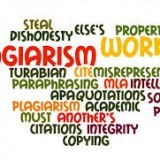Plagiarism renders expert report inadmissible.
On May 19, 2016, a judge of the BC Supreme Court, Mr. Justice Saunders, ruled that an expert report was inadmissible into evidence for numerous reasons, particularly plagiarism.
In Anderson v. Pieters, 2016 BCSC 889, the defence objected to the admissibility of a report produced by the plaintiff’s physician on numerous grounds. The judge excluded the report stating that he “would not qualify Dr. Sank as an expert capable of offering the opinion evidence tendered in the April Report.”
Saunders J. then identified a far more serious concern, namely that the physician “acknowledged in his direct testimony that he had lifted passages from the Steilen Article, copying them into his report without attribution.”
Dr. Sank explained that the “lifting” was inadvertent but the judge did not accept this. The judge stated that: “I do not accept Dr. Sank’s explanation as to his failure to credit the article having been through pure inadvertence.”
In ruling the report was inadmissible, Mr. Justice Saunders gave the following reasons:
[57] Lastly, Dr. Sank’s use of the Steilen Article raises very serious concerns as to bias and as to whether Dr. Sank has in fact fulfilled his duty to the court to provide an independent opinion. The concerns arise out of the failure to acknowledge his source material, and out of what he chose to copy, and what he chose to leave out.
[58] Regarding the copying of the Steilen Article, I would say first that I do not accept Dr. Sank’s explanation as to his failure to credit the article having been through pure inadvertence. As can be seen from the excerpts in the Appendix to these Reasons, not only did he add a few words to the passages he copied, he included two of the citations in the Steilen Article and renumbered them (renumbering notes 110 and 111 as his own notes 1 and 2), effectively representing those citations as the product of his own research. It is inconceivable that he was not conscious of the fact that his April Report was lacking necessary citation of the Steilen Article, and the fact that he was misrepresenting large portions of the narrative as his own work product. This was plagiarism, pure and simple. The plagiarism, and Dr. Sank’s failure to acknowledge it as such, were dishonest, and severely impact his credibility.
[59] The offence is not mitigated by the fact that the segments copied by Dr. Sank might be viewed as uncontroversial descriptions of basic human anatomy. The issue here is not whether the science is accurately stated. The issue is that Dr. Sank, who in fact had so little understanding of the neuro-vascular anatomy that he had to undertake research, is purporting to speak about the issues with authority, through almost entirely utilizing words, phrases, and a manner of expression that are not his own, without disclosure. He is misrepresenting his grasp of the material, and is thereby substantially exaggerating his expertise.
[60] The final concern is Dr. Sank’s failure to acknowledge the fundamentally speculative nature of his proposed diagnosis. Given the tentative nature of the propositions put forward in the Steilen Article, there is clearly no basis for him offering his opinion as being “highly probable”. In this regard his report stands in contrast to the expert opinion evidence of the otologist Dr. Longridge, who, in his August 19, 2015 report, explicitly acknowledges the lack of support for his opinion in the medical literature. In failing to express his opinion in the guarded, careful manner used by the authors of the Steilen Article, Dr. Sank was not forthright. He in fact substantially exaggerated the strength of his opinion, apparently at least in part on the basis of a misapprehension as to the need to present a “black or white” opinion. Given his relationship to the plaintiff as her treating physician, this exaggeration of his opinion’s strength gives rise to significant concern as to bias.
[61] In submissions on the voir dire, the plaintiff’s counsel argued that Dr. Sank did exactly what we want an expert to do: equipped with information from his patient and from other specialists, he undertook research, and as a medical practitioner he reached a medical diagnosis. I find Dr. Sank’s report markedly deficient, and I find him to have fallen short of the standard of independence that is required of an expert witness.
[62] On any second-stage assessment of the April Report, the foregoing issues would reveal the report to have no substantial benefit, weighing strongly against its admission. On the “costs” side of the ledger, the concerns canvassed in White Burgess are present. It is apparent that admitting even a sanitized version of the report deleting reference to the inadmissible opinions of the chiropractor would risk the jury potentially being exposed to inadmissible evidence through inadvertence in the course of his cross-examination, given the extent to which Dr. Sank relied upon it. The defence would be obliged to call experts of its own in reply to Dr. Sank, lengthening the trial and imposing a further burden on the jury. Though the defence would now be relatively well-positioned to attempt to undermine Dr. Sank through cross-examination, there would remain the risk of the fact-finding process being distorted by evidence of little real value.
[63] These concerns as to admissibility are not of the sort ideally addressed through instructions to the jury. The concerns are so broad that the necessary instruction to the jury would be something tantamount to a direction that they give the April Report no, or at best, very little weight. There is, practically speaking, nothing to be gained by burdening the jury with it.
[64] Even absent my finding as to Dr. Sank not being sufficiently qualified under the first stage of the admissibility test, I would for these reasons rule against admission of the April Report.
In an Appendix to his reasons, Mr. Justice Saunders set out “some of the passages lifted from the article – in the column to the left – with the comparable passages from the April Report set out alongside for comparison, to the right. Original wording inserted by Dr. Sank is indicated in bold face.”




